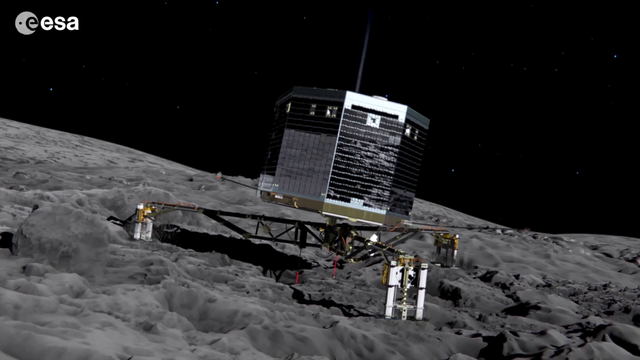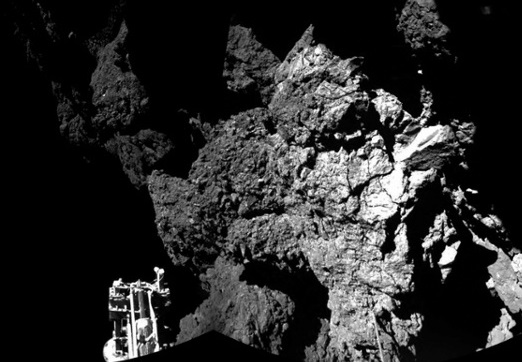The Philae lander that was delivered to the Comet 67P/Churyumov-Gerasimenko by the Rosetta orbiter still remains lost to scientists on Earth, but they now have good reasons to believe that the robot might get enough sunlight to boot it up as early as March before trying to see if it could reestablish some communication link with Rosetta; and by May or June, it should have been sufficiently booted up to resume work again.
“We are already discussing and preparing which instruments should be operated for how long,” project scientist Stephan Ulamec.
The Philae went silent and into hibernation mode when it landed roughly on the surface of Comet 67P; however, its exact landing spot is currently unknown but it is believed to be some dark spot behind some cliff where sunlight is inaccessible – rendering it unable to recharge its batteries for normal functions.
Now, scientists are beginning to think there might be some positive side to the current location of the Philae. It is now understood that while the Philae lander was meant to land at a sunny portion of Comet 67P, the robot would have become too hot to survive as the comet neared the sun by March if it had landed at the expected sunny location.
However, its current location even though still unknown is believed to be some cool dark place behind some cliff, and that means it is in some cool resting place. The approach of the comet to the sun by March should afford it some exposure to sunlight, prompting it to wake up after its batteries are sufficiently recharged.
Scientists expect the comet to start behaving in new and exciting ways as it heats up and releases more of its frozen molecules, so Philae might get to take some pretty interesting readings.


